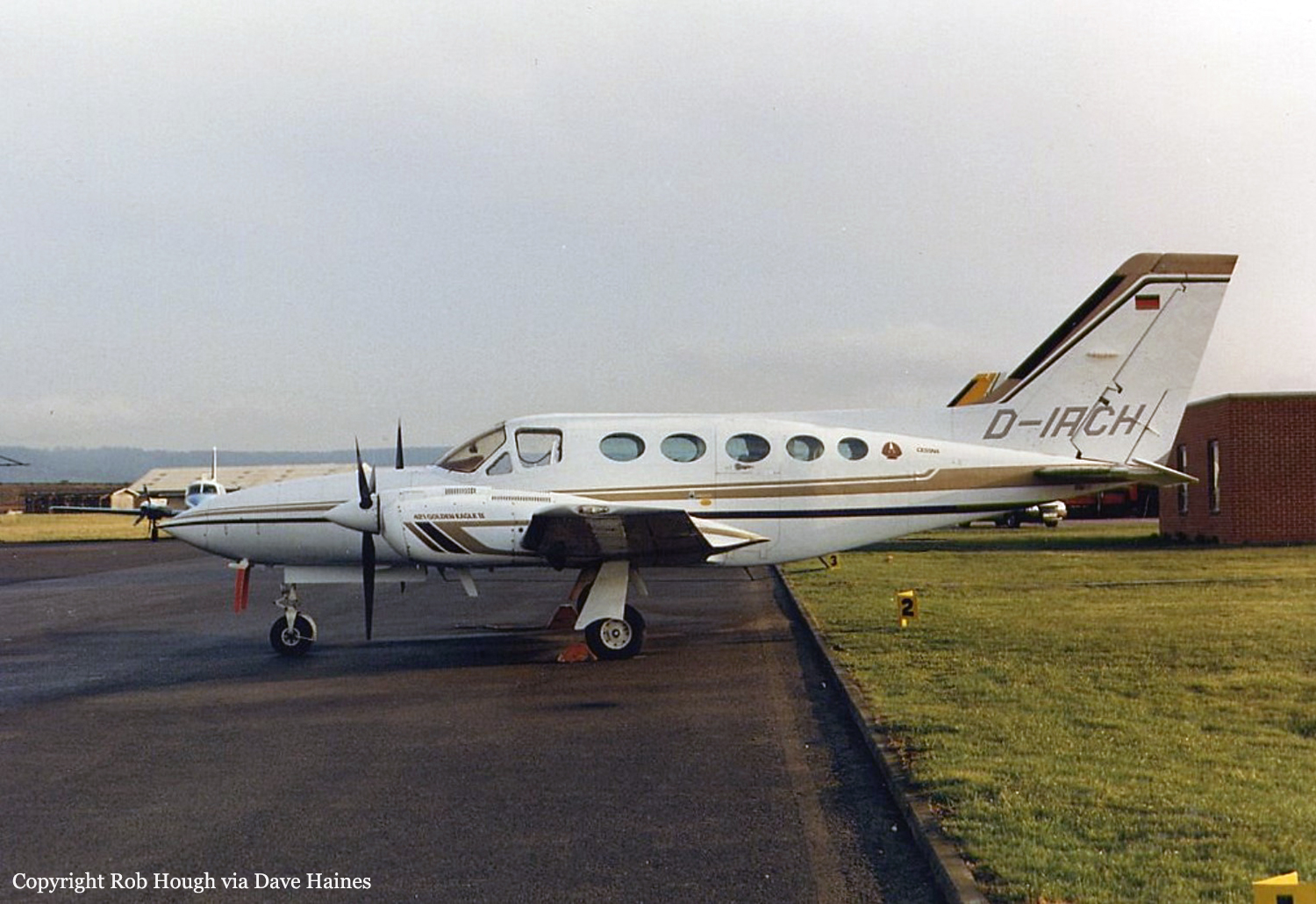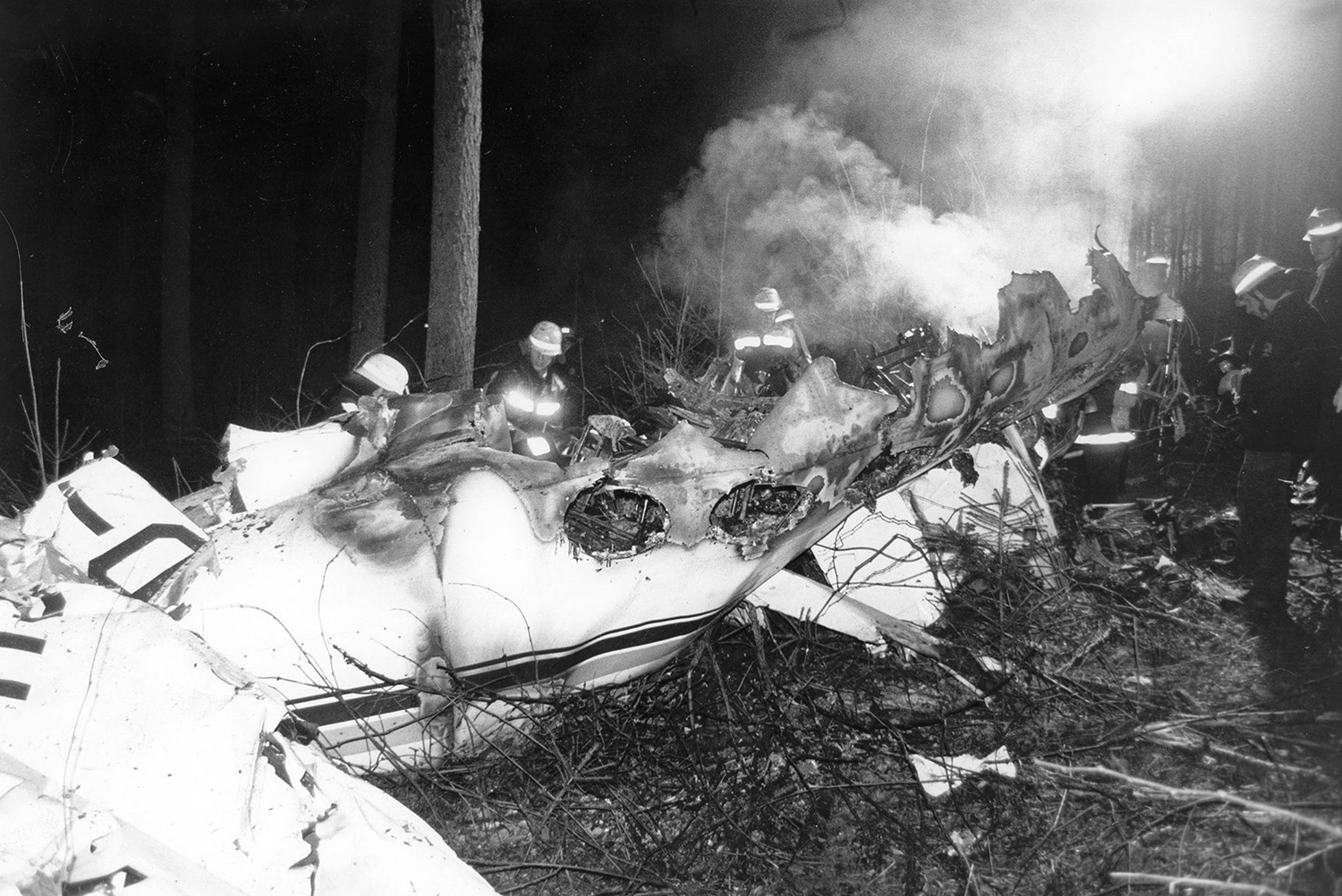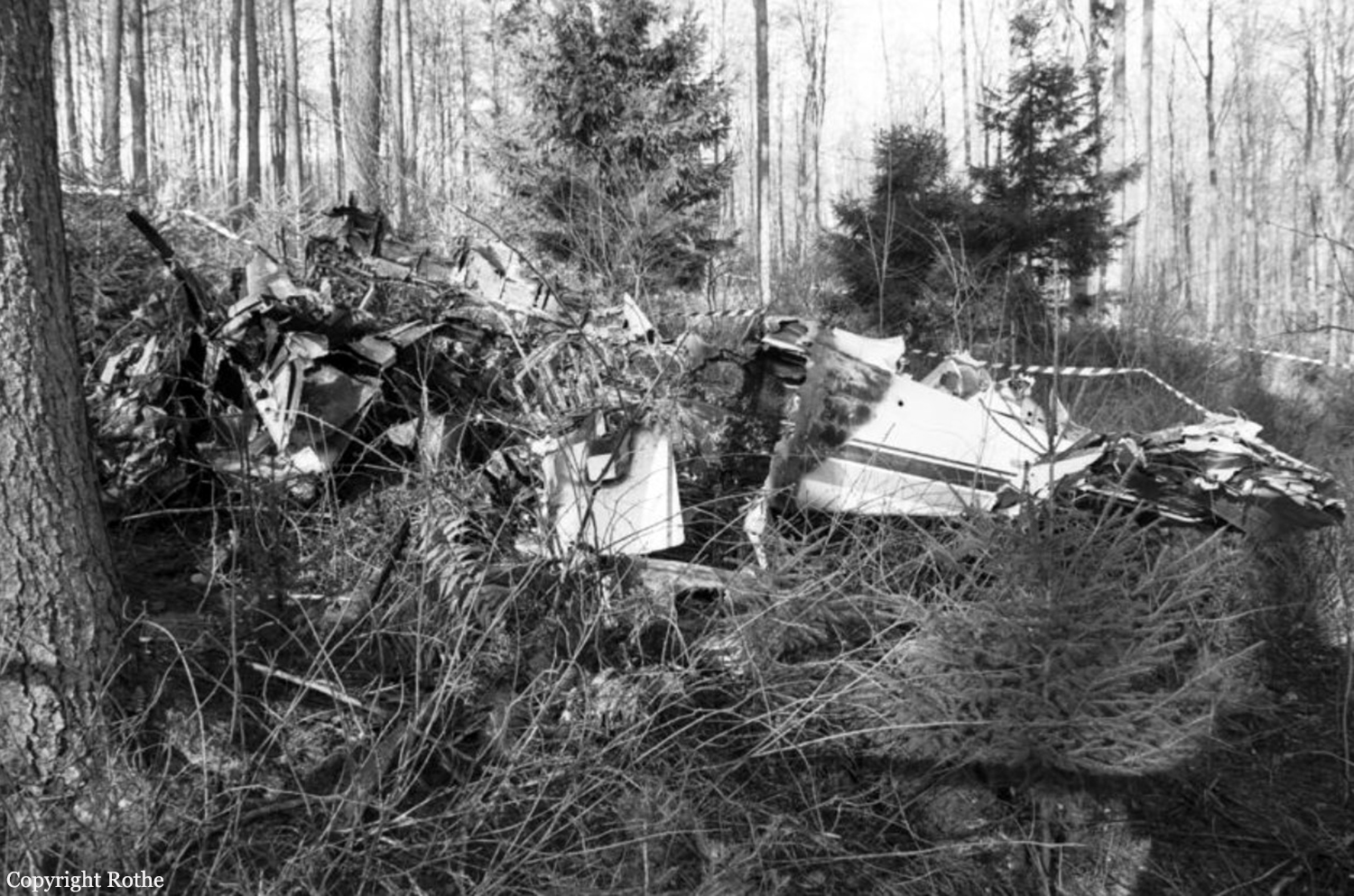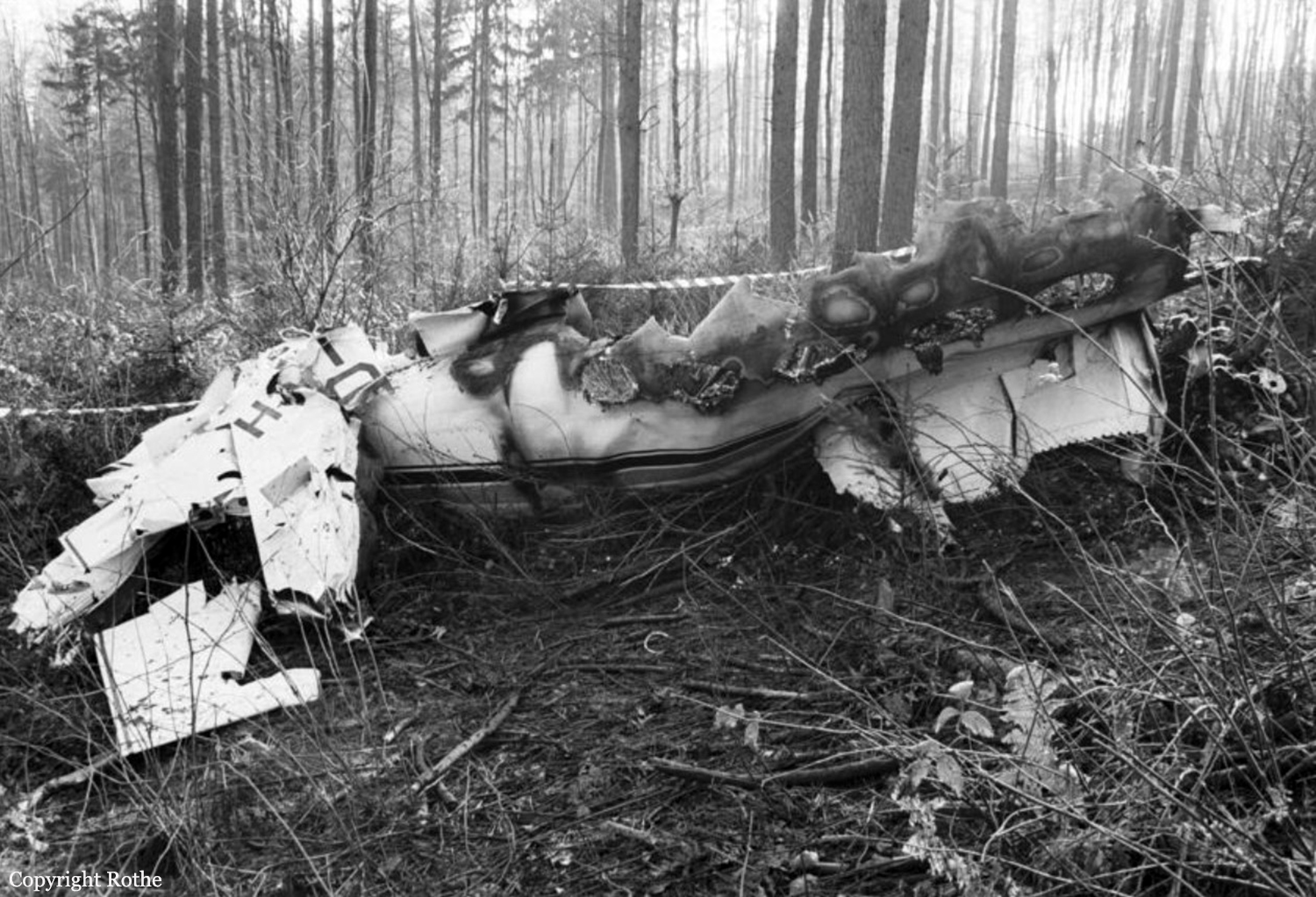Crash d'un Cessna 421C Golden Eagle III in Heidelberg: 4 killed
Date & Time:
Nov 24, 1994 at 1645 LT
Registration:
D-IACH
Survivors:
No
Schedule:
Vienna - Mannheim
MSN:
421C-0672
YOM:
1979
Crew on board:
2
Crew fatalities:
Pax on board:
2
Pax fatalities:
Other fatalities:
Total fatalities:
4
Circumstances:
The twin engine aircraft was approaching Mannheim Airport following an uneventful flight from Vienna-Schwechat. The pilot encountered poor visibility due to fog and failed to realize his altitude was too low when the aircraft struck a tall tree, stalled and crashed in a wooded area, bursting into flames. The wreckage was found on the slope of Mt Königstuhl, east of Heidelberg, about 17 km southeast of Mannheim Airport. A passenger was seriously injured while three other occupants were killed. Two weeks later, on December 7, the only survivor died from his injuries. On board were two pilots aged 34 and 29, and two passengers, Otto Rüdiger and Klaus O. Fleck, both head corporate of the Südzucker Group.









